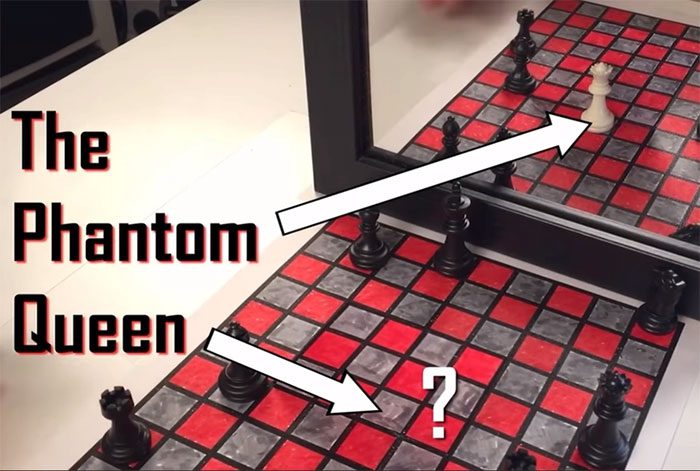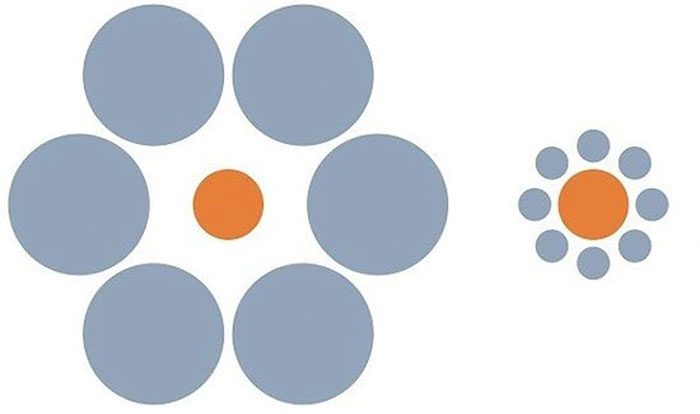“The Phantom Queen” is the name of an optical illusion featuring a seemingly normal chessboard and pieces placed upon it.
“The Phantom Queen” is the winning entry of the annual science competition “Best Illusion of the Year 2021”, which brought together talented neuroscientists, vision scientists, ophthalmologists, and artists. They collaborated to create stunning optical illusions designed to deceive the viewer’s perception.

The Phantom Queen illusion.
In the illusion “The Phantom Queen”, it is easy to see that all the pieces on the chessboard are black, arranged on a flat surface of alternating gray and pink squares. However, in a reflecting mirror (not a fake mirror) placed nearby, viewers observe the strange appearance of a white queen piece, which has no corresponding object on the chessboard itself.
This immediately astonishes us, without realizing that the queen piece is merely obscured by a visual illusion.
In the explanatory video about “The Phantom Queen,” it is evident that this is simply a well-designed 3D illusion, with the “key” being a box printed with a chessboard pattern viewed from a specific 3D perspective.
The method, known as “anamorphic perspective”, functions only from a specific angle when viewed from above, simulating a pre-established viewpoint. At that moment, the box blends with the chessboard, concealing the white queen from sight.
Explanation of the optical illusion that makes the chess piece disappear right before our eyes.
Optical illusions are known to be images that deceive the eyes. In other words, they are images that the brain “predicts.” In the above case, the 3D illusion caused us to dismiss the possibility of an object existing on the chessboard, obstructing the view of the queen. Instead, many might think that the mirror is the one that is being “faked.”
Typically, when the retina receives visual signals, the brain takes about 1/10 of a second to process and convert these signals. According to neuroscientist Mark Changizi, this 1/10 second delay in the brain is the time needed for the brain to form “predictions” about the images that may appear next.
The brain’s ability to “predict” plays a crucial role, helping us avoid running into fast-moving dangerous objects (like cars on a highway) or rapidly moving predators. Through this, it gives us a clearer perspective on this special capability of the brain.
However, sometimes due to this rapid calculation, the brain can be easily fooled by simple optical illusions.

The Ebbinghaus illusion easily deceives the observer.
For example, the famous Ebbinghaus illusion in the image above has a simple design featuring an orange circle surrounded by many other circles. You would likely perceive the orange circle on the left as smaller than the one on the right.
In reality, they are the same size. The reason is that the size and distance of the surrounding circles relative to the center circle deceived the brain regarding the size of the two orange circles.




















































